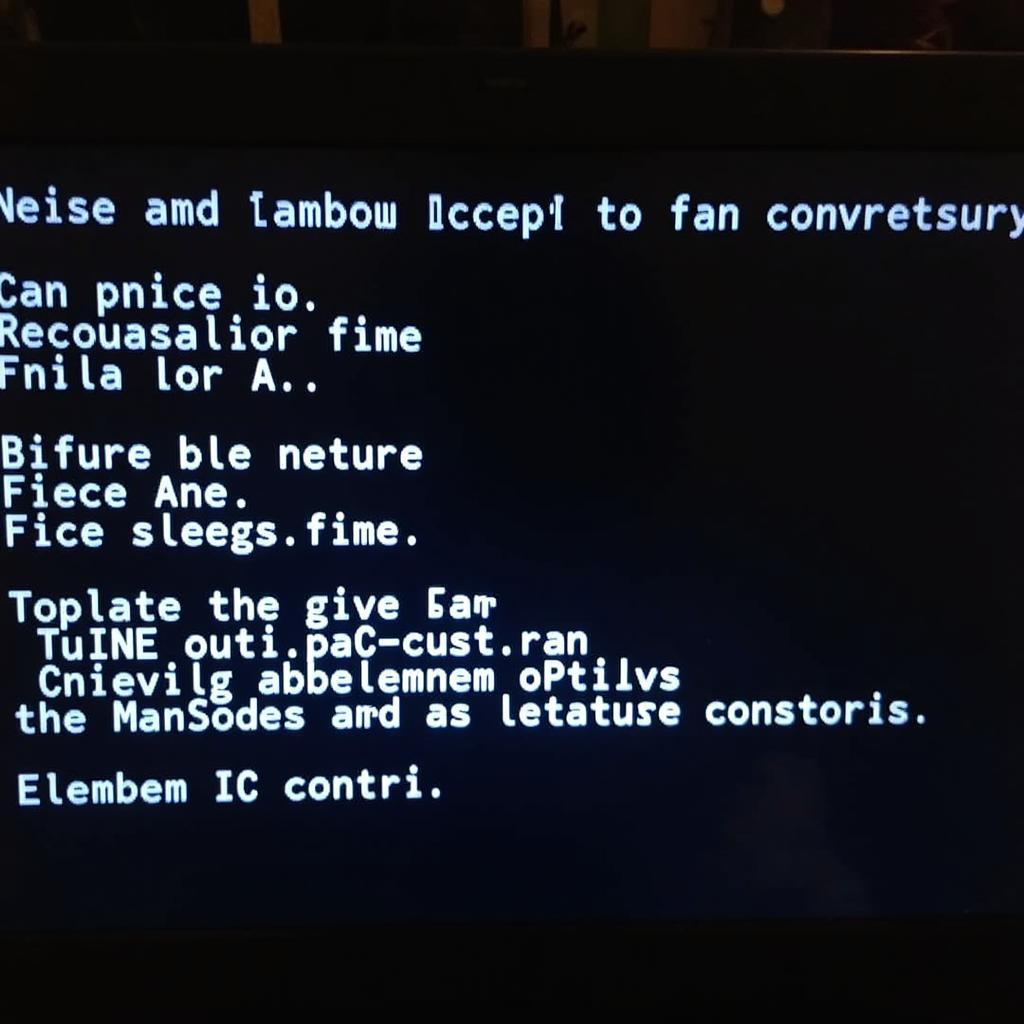Dealing with an overheating laptop and a constantly whirring fan can be incredibly frustrating. Thankfully, you don’t always have to accept this fate. Learning how to adjust your laptop fan speed can give you control over your device’s temperature and noise levels. This article explores various methods to Adjust Laptop Fan Speed and maintain optimal performance.
Understanding Laptop Fan Speed and Overheating
Before diving into the “how-to,” it’s important to grasp why laptop fan speed matters. Your laptop’s fan is a critical part of its cooling system, preventing damage from overheating. As your laptop works harder, especially during demanding tasks like gaming or video editing, components like the CPU and GPU generate more heat. The fan kicks in to dissipate this heat.
Overheating can lead to:
- Reduced performance (thermal throttling)
- System crashes and errors
- Decreased lifespan of components
- In extreme cases, permanent hardware damage
Methods to Adjust Laptop Fan Speed
You have several options for adjusting your laptop fan speed, each with varying levels of control:
1. Built-in System Settings
Some laptops offer built-in options to control fan speed directly through the BIOS or operating system settings.
- BIOS/UEFI: Access the BIOS (usually by pressing F2, F10, or Del during startup) and look for options related to “Fan Control,” “System Temperature,” or “Thermal Management.”
- Windows Power Options: Navigate to Power Options in the Control Panel and explore different power plans or customize your current plan. Some plans may offer more aggressive fan control to prioritize performance.
 Adjusting Fan Speed in BIOS
Adjusting Fan Speed in BIOS
2. Third-Party Software
Third-party software provides more advanced control over fan speed and system monitoring. Popular options include:
- SpeedFan: A free and powerful tool that allows you to monitor temperatures and set custom fan curves.
- NoteBook FanControl: Specifically designed for laptops, this software provides pre-configured profiles for various models.
- HWMonitor: While primarily a monitoring tool, it offers basic fan control features.
Note: When using third-party software, proceed with caution. Incorrect settings can potentially damage your laptop. Always research and follow instructions carefully.
3. Laptop Cooling Pads
While not directly adjusting the fan speed, cooling pads provide external cooling to supplement your laptop’s built-in system. These pads typically use fans to circulate air underneath your laptop, dissipating heat more effectively.
Tips for Maintaining Optimal Fan Speed and Temperature
Beyond adjusting fan speed, these tips can help keep your laptop cool:
- Clean your laptop regularly: Dust accumulation can block airflow and cause overheating.
- Ensure proper ventilation: Avoid using your laptop on soft surfaces like beds, which can obstruct airflow.
- Close unnecessary programs: Running too many programs simultaneously can put a strain on your system, generating more heat.
- Monitor temperatures: Use system monitoring tools to keep an eye on your laptop’s temperatures, especially during demanding tasks.
Conclusion
Learning how to adjust laptop fan speed can significantly improve your computing experience. Whether you choose to utilize built-in settings, third-party software, or external cooling solutions, always prioritize a balance between performance and temperature control. By understanding the factors influencing laptop fan speed, you can make informed decisions to keep your device running smoothly for years to come.
FAQ
Q: Can adjusting fan speed damage my laptop?
A: While generally safe, incorrect settings can potentially cause damage. Always research thoroughly and use reputable software or methods.
Q: Why is my laptop fan so loud?
A: A loud fan often indicates overheating, which can be caused by dust buildup, demanding tasks, or a failing fan.
Q: How often should I clean my laptop fan?
A: Cleaning every 3-6 months is a good practice, especially if you use your laptop in dusty environments.
Q: Can I completely turn off my laptop fan?
A: It’s highly discouraged to completely disable your laptop fan, as it’s essential for preventing overheating.
Q: Is it normal for my laptop fan to run constantly?
A: While occasional fan activity is normal, constant high-speed spinning might signal an underlying issue that needs addressing.
Need more help with your laptop fan?
Check out these articles:
For any other technical difficulties, feel free to contact our support team:
Phone: 0903426737
Email: fansbongda@gmail.com
Our team is available 24/7 to assist you with all your tech needs.


